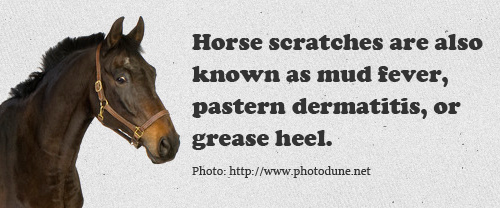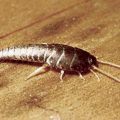 Does your horse have scabs and matted hair on its back or legs? It might have an infection commonly known as rain rot. Although not fatal, this infection can make your horse seriously uncomfortable and can spread to any other livestock that it comes into contact with. Rain rot is something you need to take seriously if you own and or take care of a horse. Here are some of the major things you need to know when it comes to rain rot:
Does your horse have scabs and matted hair on its back or legs? It might have an infection commonly known as rain rot. Although not fatal, this infection can make your horse seriously uncomfortable and can spread to any other livestock that it comes into contact with. Rain rot is something you need to take seriously if you own and or take care of a horse. Here are some of the major things you need to know when it comes to rain rot:
Definition: What Is Rain Rot?
Rain rot is a very common skin infection found on horses. This infection happens when an organism called “dermatophilus congolensis” comes into contact with an open spot on the horse, and it generally thrives in high moisture areas with warmer temperatures. This means horses with thicker hair are more susceptible to this disease, as well as horses that are housed in a warmer climate.
How Can Rain Rot Affect My Horse?
This infection cannot kill your horse, but it can make life very uncomfortable. It usually manifests itself in the form of large scabs and matted hair. The spots most commonly appear on the horse’s back, head, neck, and legs where the skin is usually stays moist without drying out.
This infection can spread rapidly from horse to horse, especially if you use the same blankets and brushes on all of your stock. Although not deadly, it can make your horse more susceptible to other more severe infections that can have more serious repercussions. This is why it is imperative that you treat any animal displaying the symptoms of rain rot even if comfort is taken out of the equation.
What Can I Do To Treat Rain Rot?
Rain rot needs to be treated as soon as you notice the symptoms. To treat this infection, you need to clean the area thoroughly. Since the sores are generally itchy and inflamed, it is best to use a mild soap or shampoo. An antimicrobial or antibacterial shampoo can also be used to help treat the organism that causes rain rot. After you clean the area, try to remove the scab without hurting your horse. Try to remove the scab without causing your horse to bleed since the bacteria grows in cuts and scrapes.
When you remove the scab, you expose the bacteria to oxygen, which will help kill the organism, according to Dr. Rose’s Remedies. This is counterintuitive to what you may think when it comes to taking care of a wound, but in this case, removing the scab can help kill the organism that causes rain rot.
In addition, you can buy treatment salves that will also help cure your horse of this uncomfortable skin condition, and they may make the sore spots more bearable as well. Remember, the best thing you can do for your horse is to keep him dry and clean. Monitor the infected areas and apply medicine as needed. Good luck – and good health – to your horse.





























No Comments
Leave a comment Cancel